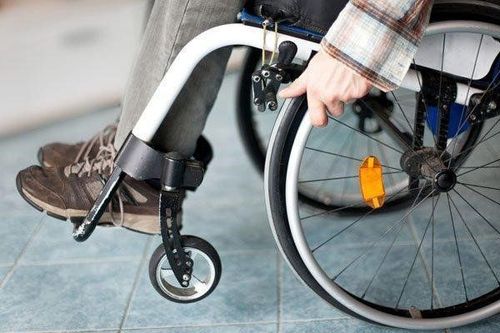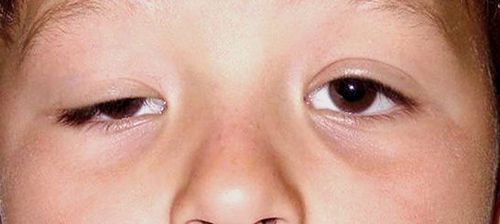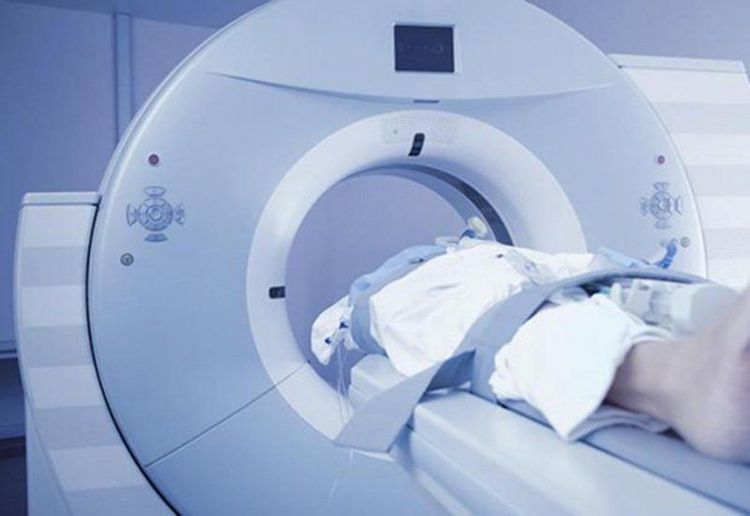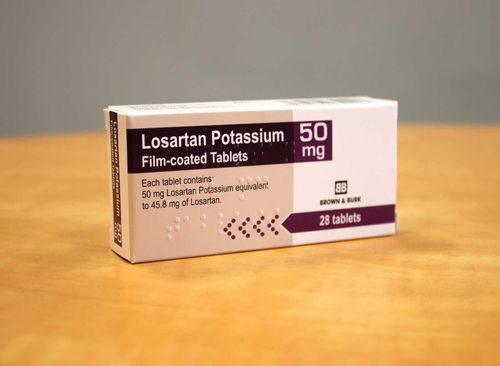This is an automatically translated article.
The article was professionally consulted with Master, Doctor Bui Ngoc Phuong Hoa - Neurologist - Department of Medical Examination & Internal Medicine - Vinmec Danang International General Hospital.1. Causes and symptoms of brain stem stroke.
The brain stem is a constitutive part of the brain, playing a central role in connecting the function of the brain with other parts of the body (cardiovascular, respiratory, ..). A brain stem stroke occurs when there is an interruption in the blood supply to the small arteries located at the back of the neck and brain. The causes of strokes in the brain stem and other areas of the brain are mostly the same.Brainstem strokes can cause different symptoms and most dangerously can cause weakness, paralysis or even loss of sensation on the side opposite to the damaged brain stem.

2. Brainstem stroke syndrome
Brain stem stroke has the following syndromes:Ondine's curse syndrome: Causes effects on the ability to breathe Weber's syndrome: Produces weakness on one side of the body with drooping eyelids, loss of ability to breathe. eye movement.

3. Brainstem stroke diagnosis
The diagnosis of stroke in the brain stem should be made by a physician knowledgeable and experienced in neurological diseases. Because brain stem strokes often have few obvious signs on CT or MRI because they are so small that they are difficult to see. If symptoms are present, the diagnosis can be made through a thorough clinical examination. It usually takes a few days or weeks for the brainstem stroke to appear on the diagnostic images.
4. Consequences of brain stem stroke
Similar to strokes in other areas of the brain, strokes in the brain stem cause serious consequences, which can be very serious because this place has many important centers (temperature, cardiovascular, respiratory) steam,..). Symptoms can appear and become severe within hours or immediately after recovering from a previous stroke. Careful patient care and monitoring will aid recovery and reduce disability later in life. A brain stem stroke, if not promptly intervened, will cause a coma and rapid respiratory arrest.
To avoid the risk of having a brain stem stroke or any other type of stroke, you should perform early screening at reputable centers - hospitals. Currently, Magnetic Resonance Imaging - MRI/MRA is considered a "golden" tool to screen for brain stroke. MRI is used to check the condition of most organs in the body, especially valuable in detailed imaging of the brain or spinal nerves. Due to the good contrast and resolution, MRI images allow to detect abnormalities hidden behind bone layers that are difficult to recognize with other imaging methods. MRI can give more accurate results than X-ray techniques (except for DSA angiography) in diagnosing brain diseases, cardiovascular diseases, strokes,... Moreover, the process MRI scans do not cause side effects like X-rays or computed tomography (CT) scans.\
Vinmec International General Hospital currently owns a 3.0 Tesla MRI system equipped with state-of-the-art equipment by GE. Healthcare (USA) with high image quality, allows comprehensive assessment, does not miss the injury but reduces the time taken to take pictures. Silent technology helps to reduce noise, create comfort and reduce stress for the client during the shooting process, resulting in better image quality and shorter imaging time. With the state-of-the-art MRI system With the application of modern methods of cerebral vascular intervention, a team of experienced and well-trained neurologists and radiologists, Vinmec is a prestigious address for stroke risk screening and screening. reliable goods.
In the past time; Vinmec has successfully treated many cases of stroke in a timely manner, leaving no sequelae: saving the life of a patient suffering from 2 consecutive strokes; Responding to foreign female tourists to escape the "death door" of a stroke;...
Please dial HOTLINE for more information or register for an appointment HERE. Download MyVinmec app to make appointments faster and to manage your bookings easily.














